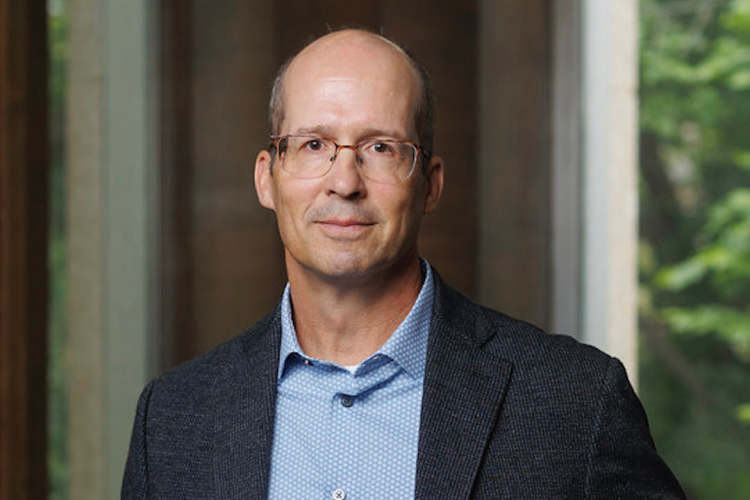The Arctic region is cold, harsh and connects Canada to the rest of the world in a unique way. The Canadian Arctic and the worldwide Arctic is home to many people and many important resources - and an international research initiative is working to improve food and resource development in the coldest regions of the planet.
A University of Saskatchewan (USask) researcher has been travelling to the Canadian and European Arctic as part of an international project to innovate food production and the food economy in Arctic communities worldwide. The focus is to identify avenues for innovating food production in Arctic communities that take community traditions and customs into consideration.

Dr. David Natcher (PhD), a professor at USask's College of Arts and Science's Department of Anthropology. (Photo: Submitted)
"What Arctic communities want is a better utilization of resources," said Dr. David Natcher (PhD), a professor at USask's College of Arts and Science's Department of Anthropology. "Let's not just harvest more fish, let's harvest fish and add value to those products, whether that's for medicinal uses, new product development, and maximizing the full utilization of those resources. It's not about more, it's about better."
Natcher is one of the Canadian leaders of the Arctic Foods Innovation Cluster (AFIC), a research group centered out of the High North Centre for Business and Governance in Norway and partnered with Nord University Business School, the Arctic Business Index (BIN) and USask. The goal of the cluster is to address food production and economic development in Arctic communities.
"How do we evolve the economic benefits, but not at the expense of culture and food systems and traditional harvesting?" Natcher asked. "We're not going to displace the food culture of local communities just to produce more food."
Food production in the Arctic can take many forms, from fishing to seaweed harvesting to agricultural products grown in greenhouses. Maria Kourkouli, a researcher working on the project from Nord University, said food innovation can take many forms - like sustainable techniques for feeding fish or modern growing techniques for plants.
"It's important to make people aware, to help them to collaborate, to help them deal with challenges, and to develop opportunities," she said. "The communities are very interested in getting involved. There are many initiatives underway."
One example Kourkouli highlighted was innovation in harvesting sea urchins - a resource that has been traditionally harvested in the Norwegian fjords. Kourkouli said a European company has connected with local communities to develop a more technologically advanced method to harvest urchins.
Kourkouli said the local Arctic communities have been interested and excited about the opportunities that have come through the project, but one of the biggest challenges has been communities not knowing these opportunities exist. One major goal of the project has been to connect local interests with external opportunities.
"The Arctic is a very interesting area, and there is a lot of space for sustainability and innovation," she said. "(The project) could be successful if we managed to make a good mapping of companies in the clusters and inform and raise awareness about new opportunities in the Arctic, or some old opportunities that have been neglected."
The research cluster is also exploring innovation along the supply chain. Kourkouli and Natcher said some strategies include collective branding to unify food products under a "made in the Arctic" label or new ways to use and market Arctic resources - like fish skins being used in Iceland for pharmaceutical purposes, or the development of marine-based leather alternatives.
Different Arctic regions around the world are developed to different degrees, so while the AFIC searches for innovative food solutions, their cluster research approach means they can identify innovations unique to different regions. As Natcher and Kourkouli put it, the cold and remote conditions of the Arctic are a unifying factor for all communities, but the actual innovations put in place can be tailored to what each community is prepared to take on.
"Whatever new kinds of innovations developed in Alaska or northern Canada are probably going to be very different than we think about in Iceland and Norway and Sweden and Finland," Natcher said. "Maybe in Canada we're thinking about local job creation for food production, and in Iceland we're talking about transitioning to renewable energies."
Another issue is that much of the food produced in the Arctic is exported and does not remain for local communities. Natcher said it's important for Arctic communities to reap more of the benefits of the production they are creating. He has been travelling to and from Northern Europe to engage more researchers and industry partners with growing Arctic food innovation projects.
"What needs to be done so these foods aren't just being exported in raw form, that lends no value to Arctic economies or communities?" Natcher said. "All the Arctic states involved saw real value in this project, and I think that's why we've been really successful at this point."










